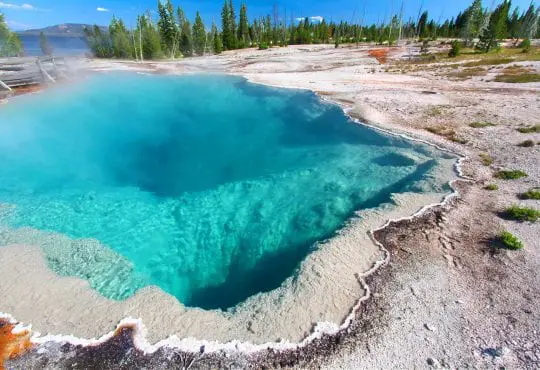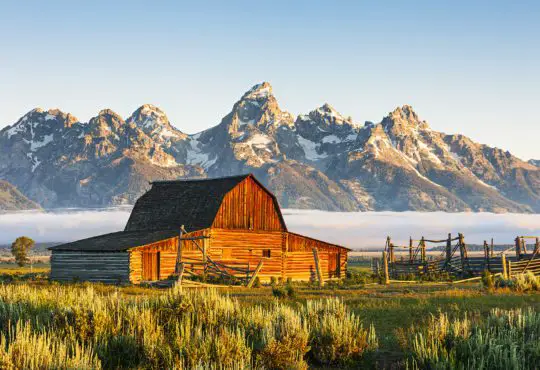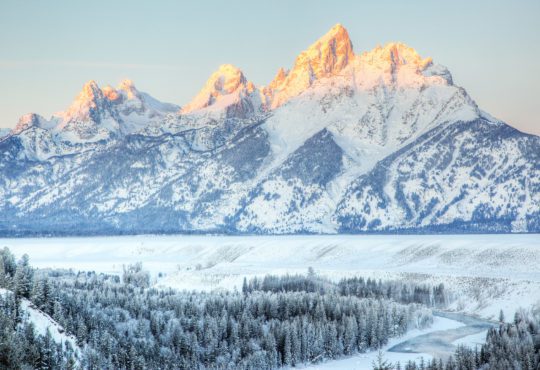
There are 12 things you need to know about visiting the Grand Tetons. Inspiring and majestic, these beautiful mountains have brought people from all corners of the Earth to explore what makes this park so special.
But, if you are going to come to this magical place, you need to be prepared so that you get the most out of your visit.
Contents
- 1 Make Reservations
- 2 Purchase your America The Beautiful Pass
- 3 There are many ways to get to Grand Teton National Park
- 4 Weather can change, be prepared!
- 5 Wildlife is wild, keep your distance
- 6 Road closures can happen anytime, have a plan “B”
- 7 Don’t miss driving the 42-mile Scenic Loop
- 8 If you have an agenda, make sure you visit at the right time
- 9 Choose from 200 miles of hiking trails
- 10 Hit it right and raft down the Snake River
- 11 If you’re looking for hot springs, they’re not far
- 12 Don’t forget to download the app!
Make Reservations
It’s a given that you need to make reservations at the eight lodges located within the park well in advance. But now, reservations must be made at all seven park campgrounds. There are no longer any first come first served campsites available anywhere in the park. This is crucial knowledge when planning your trip. My family and I used to just roll up in our RV and could always snag a spot without a reservation. Those days are a distant memory, now.
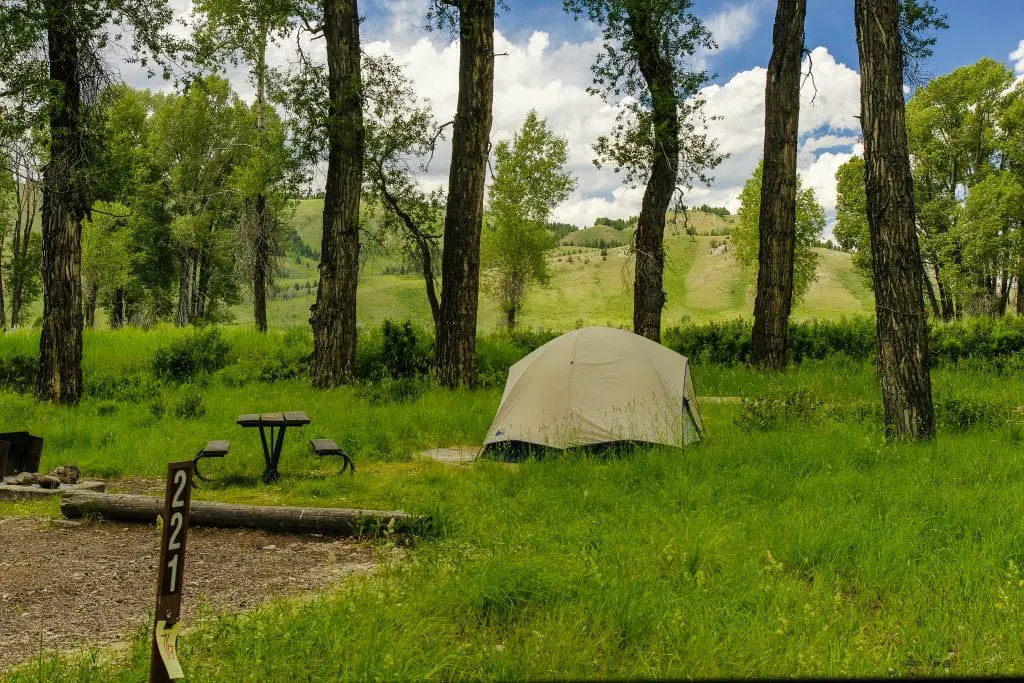
Purchase your America The Beautiful Pass
Chances are, when you visit Grand Teton National Park, you will also be visiting Yellowstone National Park. The park entrance fee by car for each park is $80 for a yearly pass. The cost for visiting both parks will be $70 without the pass, at $35 each. If you plan on going to any other national parks, monuments, scenic areas, or trails in the United States during that year, it will be free to be admitted. Parking at many areas will also be free.
If you have a fourth grader, don’t miss the opportunity to enroll them in the, “Every Kid Outdoors” program. This easy to enroll program will get them a pass that will admit the whole family into any National Park in the system for free. I was able to take advantage of this program for two years in a row with my kids and it was so helpful.
Here are a few other Grand Teton posts you might find useful:
- How to photograph Grand Teton National Park
- How to see Grand Teton in a day
- Best Grand Teton hikes for families
- Guide to the Grand Teton 42 mile scenic loop
- Best places to camp at Grand Teton
There are many ways to get to Grand Teton National Park
Did you know that the National Park has an airport inside the park? Jackson Hole Airport is conveniently located at the base of the mountain and will perfectly poise you for adventure as soon as you set foot on the tarmack. Alternatively, you can fly into the Idaho Falls Airport that is two hours away from the park. This is a great way to see the other side of the mountain and can give you an excuse to see towns like Driggs and Victor, ID that have there own dose of adventure and exploration in the form of the Grand Targhee Ski Resort and other hiking and biking activities.
If you are driving, there are three routes into town. If you are coming south from Yellowstone, you will take U.S. Highway 191 into the park. Idaho Highway 33/Wyoming Highway 22 from the west is the drive you will take from Idaho Falls. The most scenic route, though is U.S. 26 from Moran in the northeast where suddenly the Tetons appear out of nowhere and give you a breathtaking show.
Weather can change, be prepared!
Just because you are arriving after your July Fourth celebration to seventy degree weather doesn’t mean it can’t change on a dime. The weather patterns in the Tetons have a personality disorder and, although short-lived, dangerous thunderstorms with large hail or blizzard like conditions can happen anytime of year. I’ll never forget the Labor Day we spent in the park where we watched six inches of snow fall on us and RV’s and campers being destroyed due to high winds and ice.
Therefore, when you are packing, make sure you pack for all seasons. Don’t make a rookie mistake and have to buy all the winter gear in town for astronomical prices because you missed the boat in the planning department.
Wildlife is wild, keep your distance
I know you are like everyone who visits the park. You can’t wait to see a bear and her cubs or a moose chomping on some twigs. But remember, these are wild animals. They are in their natural habitat and you are a visitor to their home. When encountering wildlife keep your distance. Grand Teton park has a rule that you must keep 100 yards away from predatorial animals such as wolves or bears and 25 yards from all other wild animals. Moose seem like docile animals, but believe me when I say they can be more fierce than a bear.
I have actually broken this rule. When my family and I hiked the Jenny Lake Loop, we had only gone a short distance when a mama black bear and her three cubs suddenly appeared on the trail before us, coming our way. We were only about 50 feet from her when she appeared and it took everything I had not to run.
Thankfully, the security that I had bear spray and the knowledge I had of what to do in this situation came in handy. Although black bears are more docile than grizzlies, the park always advises to carry bear spray. If you are hiking in early spring, this is especially crucial as bears are awakening and they are hungry. They also have new cubs with them and can be very protective. In the Grand Teton, it’s not IF you will see a bear but, WHEN you will see a bear.
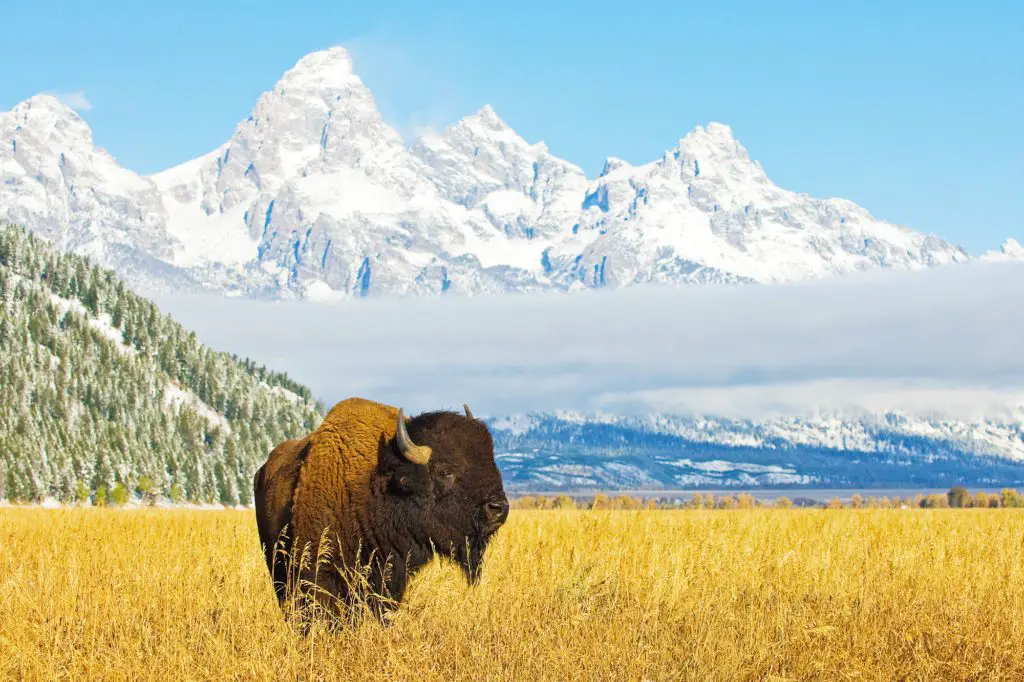
Road closures can happen anytime, have a plan “B”
Wildlife in the park are always on the move and different seasons bring a change in habit and territory. It may be necessary for the park to close roads or sections of roads due to animal activity in order to keep humans and wildlife safe.
You may have Moose-Wilson Road on your vacation itinerary, but make sure it is open on the days that you will be there. It often closes in the fall because of high bear activity. There are large areas of the park in winter that also close due to ungulate mating or calving.
Not to worry though. There are so many opportunities for wildlife viewing that you are bound to find alternatives during your stay.
Don’t miss driving the 42-mile Scenic Loop
Although this loop drive is only possible to do in its entirety during the summer, there are still parts of it open during the winter as well. If you are visiting during the summer, I recommend that you drive this loop early in your trip. You can then get a good feel for the park and some of the attractions that you will want to go back and enjoy.
Alternatively, you can take a guided tour of the scenic route. The advantage to this is that guides are experts in when and where to see wildlife and will know the best places to stop for optimal viewing opportunities. You can also keep your gaze fixed on the sights instead of the road.
If you have an agenda, make sure you visit at the right time
Included in the 12 Things You Need To Know About Visiting the Grand Tetons should be the fact that you need to visit when the activities you want to do are optimal. If you want to see the wildflowers, changing leaves or anything that is seasonal, make sure you do your research and go at the right time.
Wildflowers is the summer are beyond gorgeous. Your best bet of seeing them on the valley floor is in June. The wildflowers also peak in the higher elevations in July. Therefore, if you plan on hiking, you’re bound to see some color.
If you have never heard an elk bugle then you may want to plan to visit in mid August through the month of September. The bugle is the bull moose mating call and it is a mystical sound that is incredible to experience.
You can kill two birds with one stone at the end September and catch the bugling elk and the changing fall leaves. Golden cottonwoods can be found along the Snake River in the valley, while bright orange and yellow aspens creep up the hills into the mountains. Scattered Black Hawthornes round out the picture with a phenomenal scarlet hue.
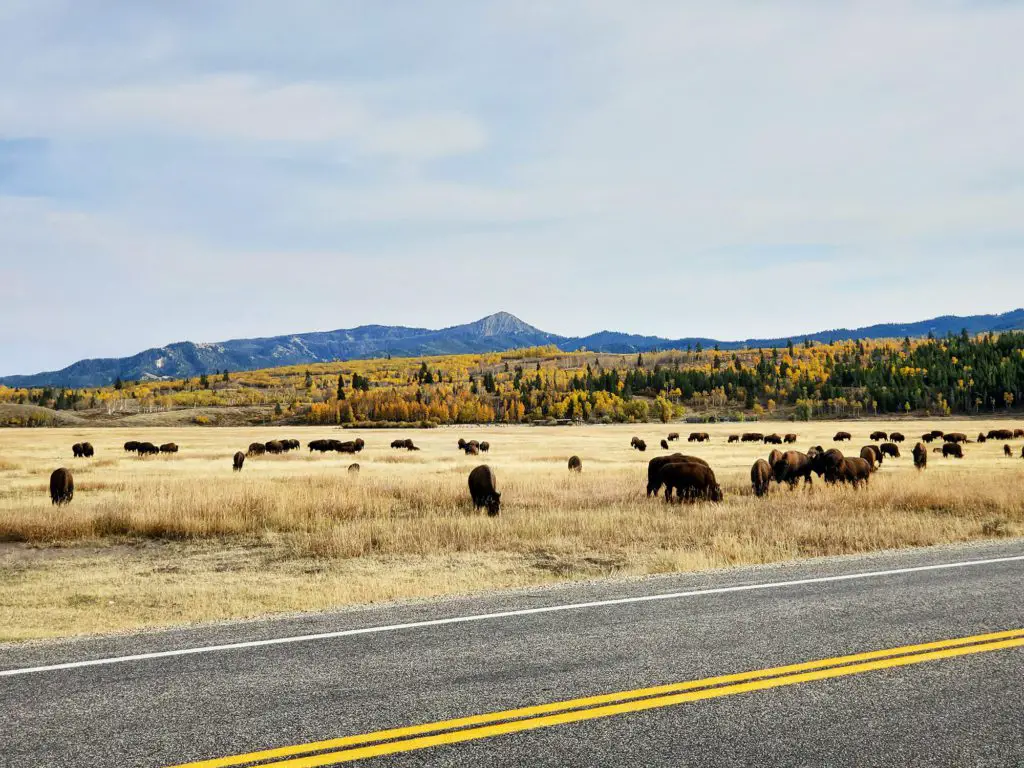
Choose from 200 miles of hiking trails
There is no shortage of hiking in the Tetons. Try an easy, level hiking trail that is less than two miles like Schwabacher Landing Trail. For the more difficult backcountry, multiday hikes you can conquer the Lake Solitude Trail. There are so many trails to hike that you could spend years hiking and still have more to see.
Hit it right and raft down the Snake River
Rafting down the Snake River is great all year long. But, you have to plan it according to what kind of rafting you want to do. If you want the adrenaline inducing rapids of early spring, then plan to go when the snow is melting in May and June. If you want more of a leisurely float in hopes of spotting wildlife, you should go in late August and September. You must obtain a permit if you plan on going without a guide. However, if you plan on taking a guided rafting trip or float trip, the permitting will be handled for you.
If you’re looking for hot springs, they’re not far
Grand Teton and Yellowstone National Park are located in one of the most active geological locations on the planet. Magma is never far from the surface hence all of the hot springs in the Yellowstone area. But, if you’re in the Grand Teton area, can you soak in any of them?
You’re in luck, because there are several areas inside and outside the park that are good for soaking. The closest hot spring is inside the park. Kelly Warm Springs is better for summer soaking because it is the cooler of the hot springs, but nonetheless still inviting.
Granite Hot Springs is located just south of Jackson and is a developed hot spring that is accessible by car in the summer months. During the winter a snowmobile or cross country skiing can get you there.
Astoria Hot Springs is also in the same area and sits along the Snake River. There are several soaking areas and the views are incredible. Visiting hot springs is definitely one of the 12 Things You Need To Know About Visiting the Grand Tetons.
Don’t forget to download the app!
The National Park Service has their own apps. Downloading Park Apps is essential to having all of the info you may ever need at your fingertips. Even if you don’t have internet access, the downloaded interactive maps and audio tours will still work on the road or on the trail. You can choose from several apps that will help you navigate trails, directions, visitor’s center information and road closures. It really is imperative so you can have an easygoing smooth sailing trip.
If you keep these 12 Things You Need To Know About Visiting the Grand Tetons in mind, you are more likely to have a trip free of worries and stress. Remember, knowledge is power. Especially, when it comes to vacations!




